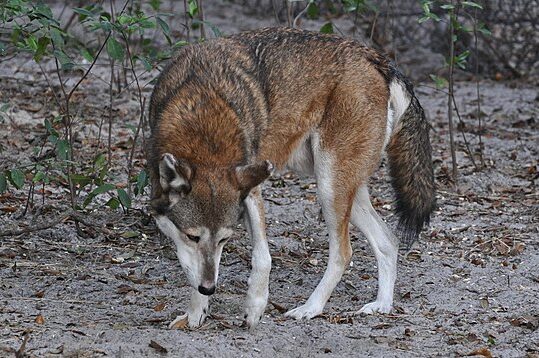
A “grim” new report reveals that more than a third of US wildlife are at risk of extinction.
In the United States, 40% of animals and 34% of plants are “at risk” of extinction, according to a NatureServe report.
A new report (opens in new tab) has provided a gloomy outlook for wildlife in the United States: In the country, up to 40% of animal species and 34% of plant species are at risk of going extinct, and up to 41% of U.S. ecosystems are at risk of range-wide collapse, which means that they may never be seen again.
The report was made available on February 6 by NatureServe, a North American conservation organization. The report assigns a risk score to each species found in the United States. Secure, ‘appearingly secure,’ ‘vulnerable,’ ‘imperiled,’ ‘critically imperiled,’ and ‘possibly extinct’ are “At risk of extinction” means that any of the species in the last four groups are endangered. NatureServe’s network of more than 1,000 scientists used more than 50 years’ worth of data to compile the rankings.
“The data reported by NatureServe is grim,” U.S. Rep. Don Beyer, D-Va., told Reuters(opens in new tab). It is “a harrowing sign of the very real problems our wildlife and ecosystems are facing.”
According to Reuters, NatureServe President Sean O’Brien described the report’s findings as “terrifying,” but he expressed hope that they will assist lawmakers in comprehending the urgency of enacting new safeguards.
Snails are the animals most at risk, with 75% of freshwater snails and 74% of terrestrial snails at risk of extinction. Freshwater mussels are next, with 65% of them at risk, followed by crayfish (55%) and shrimps (48%) and bees (37%) According to the authors of the report, an increase in damming and pollution of waterways appears to be particularly harmful to freshwater species.
Amphibians are the most in danger of all the larger, major animal groups, with 42% at risk. They are followed by fish (35% at risk), reptiles (22% at risk), mammals (18% at risk), and birds (12%).
The red wolf (Canis rufus), the recently cloned black-footed ferret (Mustela nigripes), the Mississippi gopher frog (Lithobates sevosus), the highly inbred Devils Hole pupfish (Cyprinodon diabolis), the Kemp’s Ridley sea turtle (Lepidochelys kempii), the North Atlantic right whale (Eubalaena glaci
Cacti are the most endangered group of plants, at 48%, followed by orchids (27% at risk), trees (20%), and grasses (19%). The imperiled Venus flytrap (Dionaea muscipula) and the critically endangered maple leaf oak (Quercus acerifolia) are two notable plants that are in danger. The scientists wrote that because plants don’t get as much money for conservation as animals do, they will be especially vulnerable in the future.
Tropical forests, tropical grasslands, and tropical cliffs are the most threatened ecosystems, with 100% of each category at risk of range-wide collapse. Tropical savannas, temperate grasslands, and temperate forests are next, with 88% at risk.
California, Texas, and a portion of the Southeast contain the greatest number of threatened species and ecosystems.
The main threats to wildlife in the United States are habitat loss, conversion of land, pollution, climate change, and invasive species.
Researchers wrote that the report will help conservationists protect wildlife in the United States by focusing on the areas where assistance is most needed.
“If we want to maintain the panoply of biodiversity that we currently enjoy, we need to target the places where the biodiversity is most threatened,” O’Brien said. “This report allows us to do that.”
——————————————————————————
At Natural World Fund, we are passionate about stopping the decline in our wildlife.
The declines in our wildlife is shocking and frightening. Without much more support, many of the animals we know and love will continue in their declines towards extinction.
When you help to restore a patch of degraded land through rewilding to forests, meadows, or wetlands, you have a massive impact on the biodiversity at a local level. You give animals a home and food that they otherwise would not have had, and it has a positive snowball effect for the food chain.
We are convinced that this is much better for the UK than growing lots of fast-growing coniferous trees, solely to remove carbon, that don’t actually help our animals to thrive.
This is why we stand for restoring nature in the UK through responsible rewilding. For us, it is the right thing to do. Let’s do what’s right for nature!
Support our work today at https://naturalworldfund.com/ and join in the solution!

